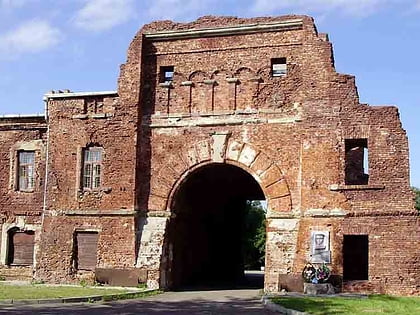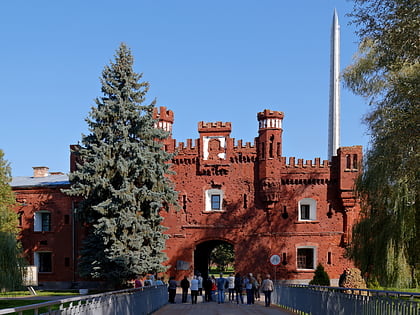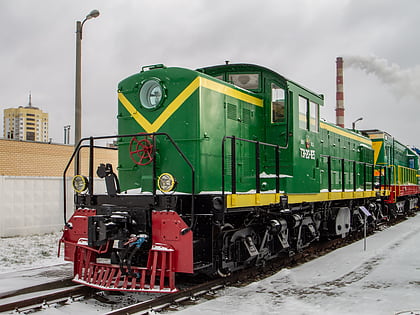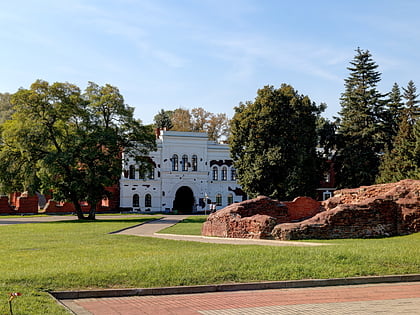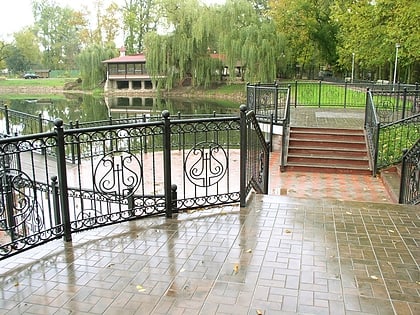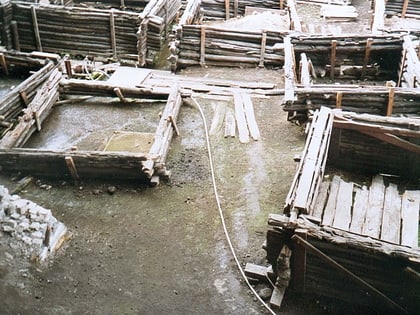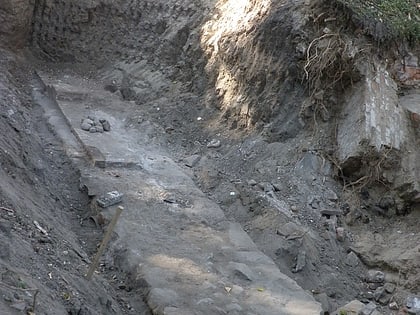Terespol Gate, Brest

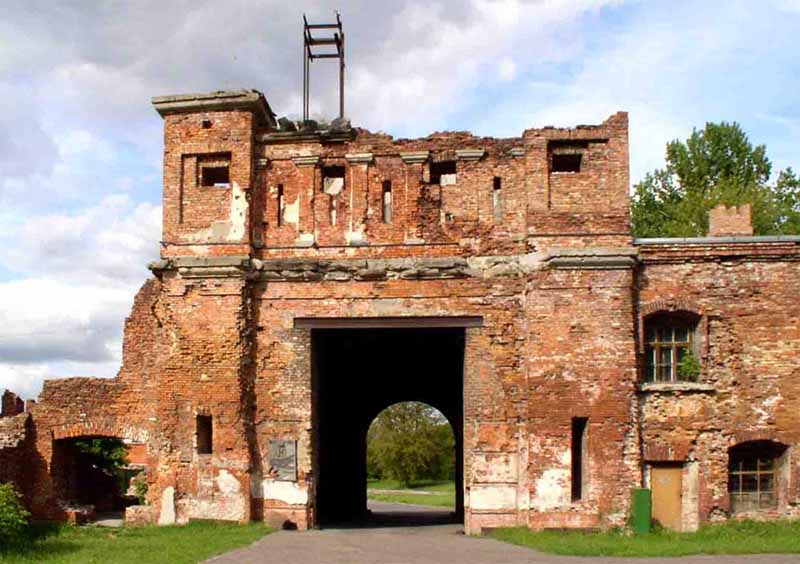
Facts and practical information
The Terespol Gate, an architectural gem nestled in the city of Brest, Belarus, stands as a historical sentinel at the entrance to the Brest Fortress. This neoclassical triumphal arch was constructed in the early 19th century, specifically between 1820 and 1822, under the orders of the Russian Tsar Alexander I, as a commemoration of the soldiers who valiantly fought in the war against Napoleon.
Resembling the grandeur of the Arc de Triomphe in Paris, the Terespol Gate is a testament to the military might and imperial presence of the Russian Empire in the region. The gate's design is attributed to the Italian architect Luigi Rusca, who was renowned for his neoclassical style, which is evident in the gate's robust and symmetrical form.
The monument's significance is not only historical but also cultural, as it has been a part of various historical events, including the Second World War, during which the Brest Fortress played a crucial role. The Terespol Gate has withstood the test of time, surviving numerous conflicts and serving as a symbol of resilience for the people of Brest.
Visitors to the gate can explore the surrounding fortress complex, which has been transformed into a memorial to honor those who have defended the city throughout its tumultuous history. The Terespol Gate itself is an imposing structure that provides a poignant gateway to the past, inviting reflection on the events that have shaped the city and the region.
Brest
Terespol Gate – popular in the area (distance from the attraction)
Nearby attractions include: Brest Fortress, Brest Railway Museum, Kholm Gate, Brest City Park.
